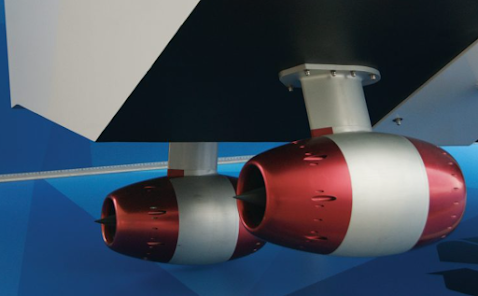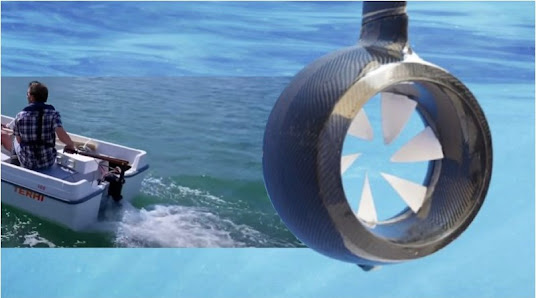This ground-breaking water jet could jump-start the electric boats revolution
Italian begin-up Sealence is promising dramatic profits in the velocity and variety of electrical boats thanks to a thorough new pod-formed waterjet, reviews Hugo Andreae outboard motor covers
building an electric powered boat isn’t hard but growing one with the speed and range to rival a petroleum or diesel powered one is a whole lot more difficult. this is the dilemma that set Italian engineer William Gobbo at the course to developing a very new type of electric powered propulsion device.
rather than truly swapping a boat’s combustion engine for an electric powered motor and leaving the relaxation of the drivetrain untouched, Gobbo realised that a holistic method, which played to an electric powered motor’s strengths, could attain a ways bigger rewards. the solution he got here up with is an electric powered water jet that combines each the motor and the propulsion device in a single unit.
this may be hooked up under the boat IPS-fashion or on the transom like a sterndrive leg, and steers by using vectoring its thrust IPS-fashion. The pod model can even be swivelled through 360° to provide reverse or sideways thrust.
called DeepSpeed, this revolutionary new propulsion system offers some of potential benefits over both propellers and traditional waterjets. first of all, there are no related mechanical losses as there aren't any gears, shafts or customary joints shifting power from the engine to the force, only a pair of wires taking present day from the batteries to the motor.
Secondly, it’s a much smaller, lighter package deal that weighs an insignificant 75kg (ex battery p.c.) compared to around 660kg for a Volvo Penta D4 and takes up a long way much less area than an engine and gasoline tank. Thirdly, not like a propeller that turns into less green the faster you move because of cavitation and tip losses, a waterjet definitely becomes more efficient.
lastly, the shape and function of the DeepSpeed pod places it at once within the route of water flowing below the boat as opposed to having to redirect the glide up through an intake device and out of the transom as you will with an inboard waterjet. This reduces complexity and inefficiencies. The end result, consistent with Sealence, is a drive device this is greater efficient than either a propeller or a waterjet through the entire rev variety, even at low speeds wherein waterjets commonly battle.
lower back story
Gobbo first proposed the concept again in 2007, using computer simulations to test its capability, earlier than developing the primary operating prototype in 2010. however, it wasn’t until the advent of Professor Ernesto Benini, an expert in fluid dynamics from the university of Padua, that its complete capability started to be realised in 2016.
The crew at the back of the undertaking now contains 21 unique experts which include engineers, designers, hydrodynamicists and even a powerboat racer, who collectively form the determine employer Sealence.
It’s no accident that the cutting-edge DeepSpeed prototype resembles the jet housing of an aeroplane engine as, like a turbofan, it's far designed to funnel water (as opposed to air) within the front end and accelerate it out via a smaller nozzle on the lower back. but, in preference to a critical hub-established fan compressing it and combining it with burning fuel, the DeepSpeed jet uses impeller blades on a hubless revolving outer ring turned by using a effective electric motor.
The quicker the boat is going, the greater water is force fed into the jet, increasing its typical efficiency. different associated benefits consist of a reduction in noise and vibration due to the motor being placed out of doors the hull in preference to inside it, and the absence of any additional cooling machine.
currently Sealence is running on two DeepSpeed fashions, the 120e and the 280e. the former is continuously rated at 72hp with a peak power output of 92hp but due to the brought performance of the jet’s layout it is being touted because the equivalent of a 120hp combustion engine.
The latter is rated at 163hp with a peak of 244hp however is said to be equivalent to a 280hp combustion engine. both can be fitted as single or dual installations in either sterndrive or pod-fashion mounts. in line with Sealence, when fitted to a 40ft 12-tonne sportscruiser, a couple of 280e pods would provide a claimed pinnacle pace of 38 knots.
some of boat producers including Amer Yachts and Scanner RIBs are already searching at incorporating DeepSpeed jets into new or existing boat designs, of which were exhibited at the recent Genoa boat show.
The destiny
Sealence’s longer-term goal is to offer a complete hybrid electric powered drivetrain package that consists of a modular device of expandable lithium ion batteries, solar panels, a diesel variety-extender and a selection of different DeepSpeed jets as much as 540hp all managed by using a single Smartbox. this could allow it to energy a huge variety of different craft from 9m to 24m.
“The purpose is to notably reduce energy intake however still growth navigation pace with out noise emissions and fending off the pollutants of both water and air,” says Gobbo.
If it could supply on that promise and demonstrate to the world that the DeepSpeed waterjet does live up to these bold claims, it absolutely could be the start of an electric revolution. outboard motor covers



Comments
Post a Comment